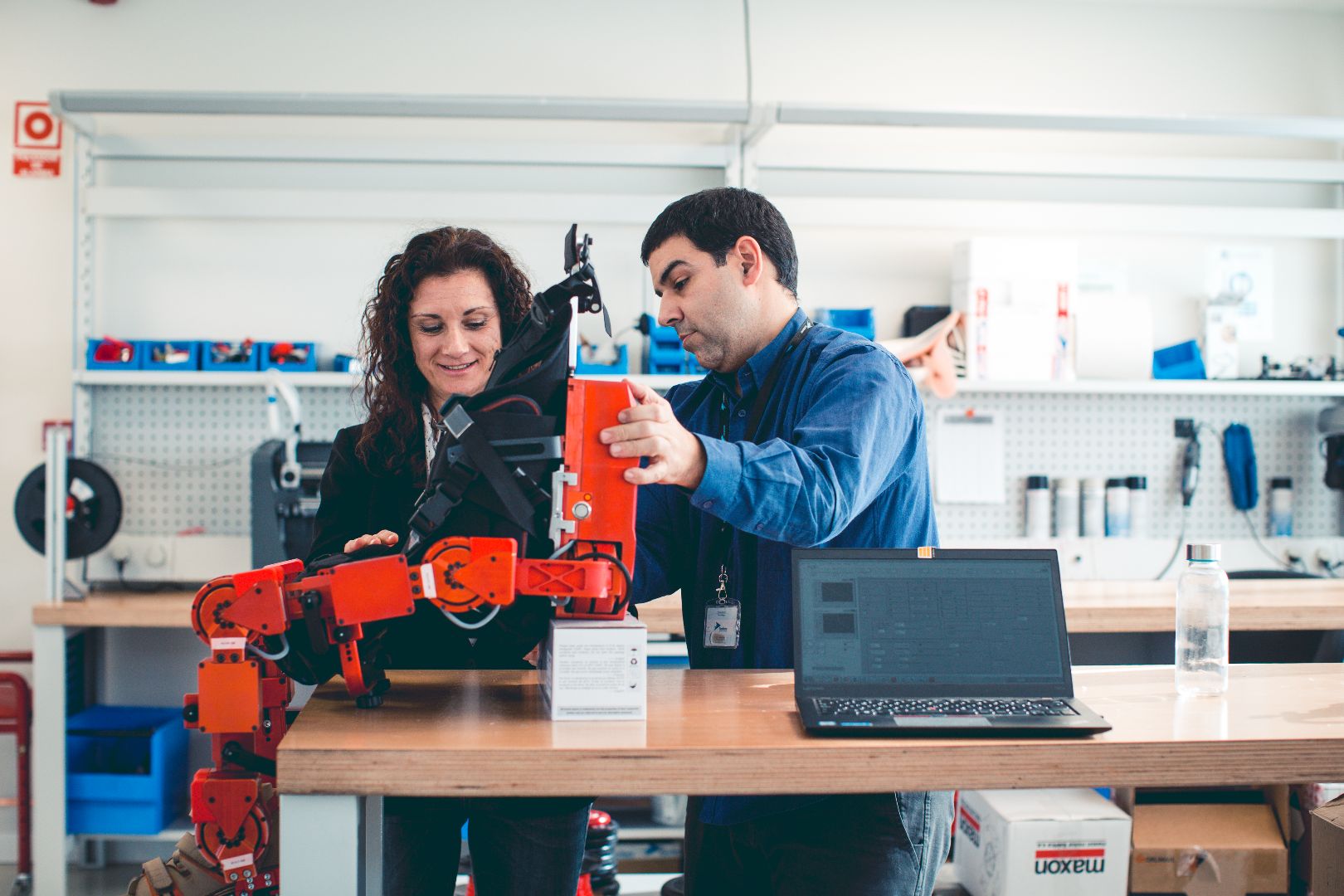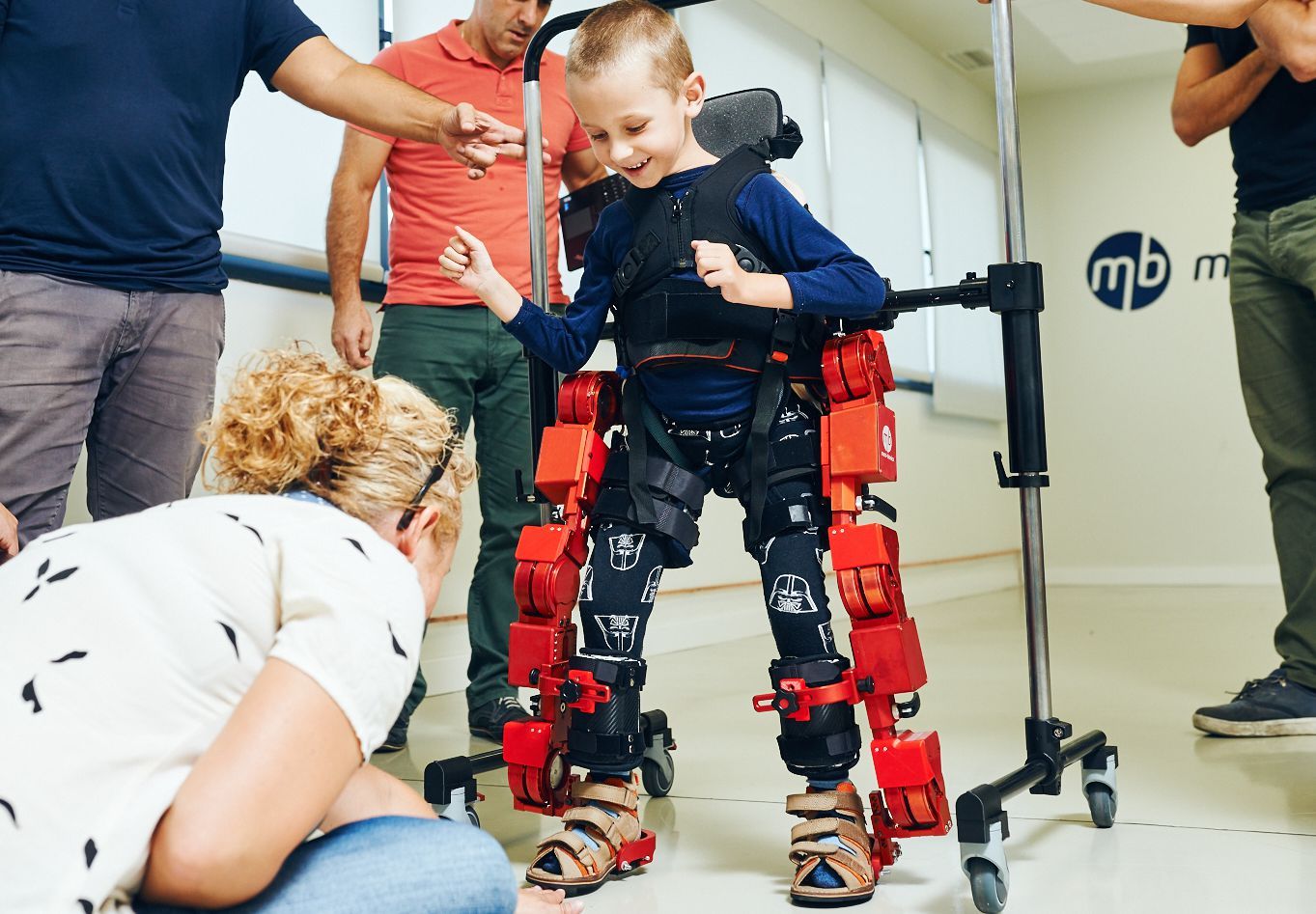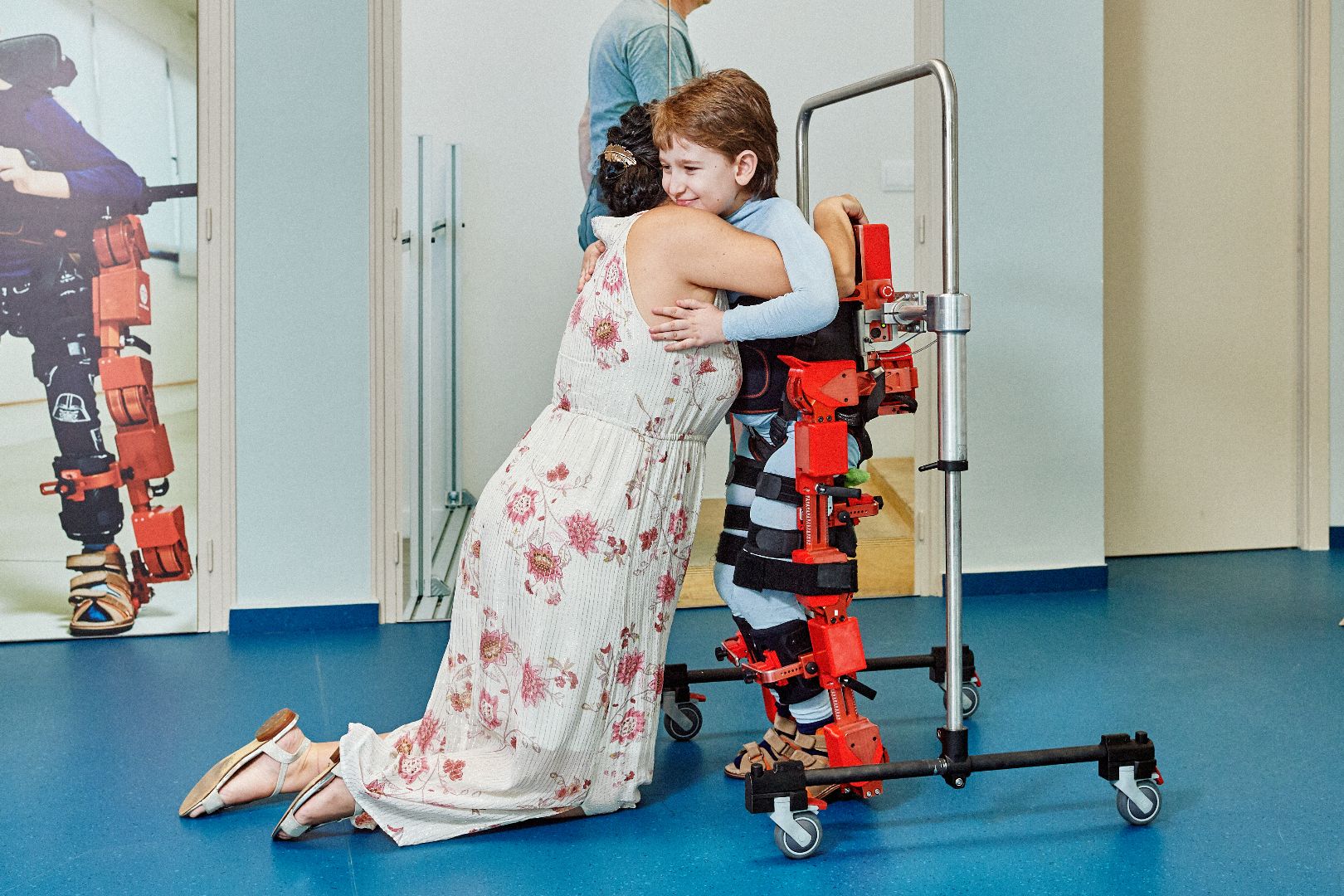Features
Exoskeletons to help children with neurological diseases
01 February 2022
Interviewing Elena García Armada, CEO at Marsi Bionics
Elena García Armada, CEO of Marsi Bionics, is an awarded PhD in robotics engineering located in Spain with 20 years of experience in walking robots. She led the research team that developed the world’s first bionic exoskeleton for children with muscular spinal atrophy (SMA) and with Cerebral Palsy, which is the first cause of child disability affecting 1 in 323 children worldwide.
As you might guess, interviewing Elena is beyond exciting. She tells us about her journey into exoskeletons and the future of Marsi Bionics, where intellectual property (IP) has a crucial role.
 Elena García Armada (CEO) and Manuel Prieto (CTO). Photo from Javier Valeiro.
Elena García Armada (CEO) and Manuel Prieto (CTO). Photo from Javier Valeiro.
Was the exoskeletons' technology something that you were drawn to from the beginning of your research?
I spent a period of fundamental research about the dynamics and biomimetics of autonomous walking robots for industrial and service applications. However, there was a moment when everything changed.
Daniela, a little girl who became a quadriplegic due to an accident, made me change my mind. Her parents asked us about the possibility of applying robotics to paediatric gait training. From then on, we began to work on the application of robotics to assist human gait in paediatric patients.
“When we began working with Daniela, we started receiving a lot of requests of families for their children to be able to use them.” 
When did it become clear that there was a market niche to fulfil in the exoskeleton's technology?
When we began testing the first ATLAS prototype with Daniela, we started receiving a lot of requests of families worldwide for their children to be able to use the device. We even received medical reports to check the indications for use of the exoskeleton.
That's when we realized that, once the research project was over, we needed to create a spin-off to carry on with the work. We had to continue developing the technology and it had to be available to the society to meet the demand of so many families. That is the origin of Marsi Bionics.
“Getting to that point of having a unique device in the world capable of helping millions of people is utterly rewarding.”
You already have 8 patents, 3 of them licenced internationally. Tell us a little bit about your first patent, it must have been exciting.
Some patents mean a bigger step that others. In some cases, they may be smaller advances but, like any technological development, they need to be protected to guarantee their ownership. In my case, my first patent in which I collaborated was a flat positioner with two degrees of freedom with static and confined actuators.
The most relevant patents, on a personal and professional level, have been the last 4 related to paediatric and adult walking exoskeletons. One of them protects the robotic muscle that controls the joint motion of the patients wearing the exoskeletons. Getting to that point of having a unique device in the world capable of helping millions of people is utterly rewarding.
“The internationally patented ARES technology simulates the functioning of natural muscle thanks to the concept of biomimicry.” 
Tell us a bit more about "ARES", the patented controllable-stiffness joints that makes Marsi Bionics unique: how does it work?
The internationally patented ARES technology emulates the way a natural muscle works thanks to the concept of biomimicry. This joint is inherently elastic and its behaviour adapts to the child's muscular condition. This allows the device to interpret the user’s movement intention and provide the necessary strength and stability.
“[..] patenting is an obligation. [..] Otherwise, we would be at the expense of any other company or country appropriating all the years of effort that go into a research or invention.”
What would you recommend other entrepreneurs regarding IP?
At the industrial or commercial level, patenting is an obligation. In a highly competitive international market, this guarantee of ownership is absolutely necessary. Otherwise, we would be at the expense of any other company or country appropriating all the years of effort that go into a research or invention. The patent is what protects our competitive advantage.
What is like a normal work day for you?
Elena García Armada (CEO). Photo from Craus Fotografia
A random work day is a very busy day. Indeed, I keep my work as a scientific researcher at CSIC while Marsi Bionics develops robotic technology. I also participate in forums, organizations, talks, conferences, etc. The day to day is complicated in all aspects, but the advantage of being an engineer is an enormous capacity for organization and work that makes it possible.
What is the next step for exoskeletons and Marsi Bionics?
Our idea for Atlas 2030 is to be much more than a rehabilitation device. We want it to be a walking aid that can be used in a domestic environment. That is where we will be able to make a qualitative step in effectiveness and children will be able to be more autonomous.
Regarding adults, we have also developed devices for adult patients in gait pathologies of high incidence, such as spinal cord injuries, stroke or rehabilitation after knee surgeries, thanks to other exoskeletons such as the MAK Active Knee (MAK). We currently have new projects in development, which will mean a huge revolution for this type of patients.
Useful Links:
Professor Elena García is winner of the European Inventor Award 2022. Click here for more information.



